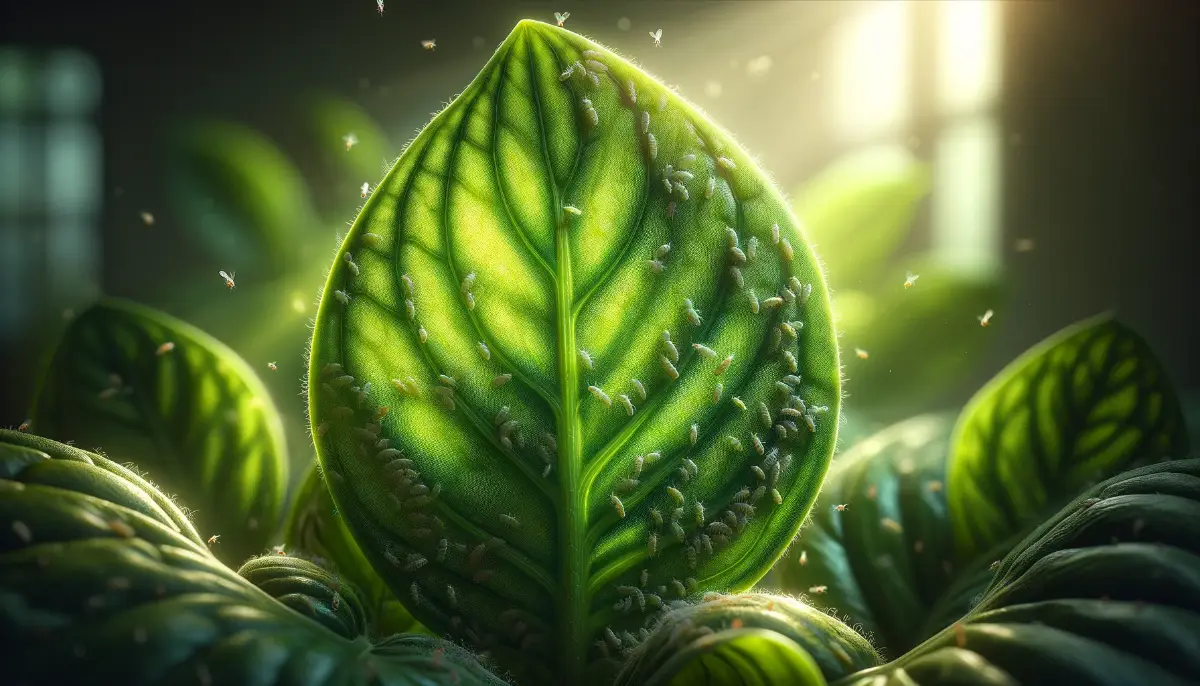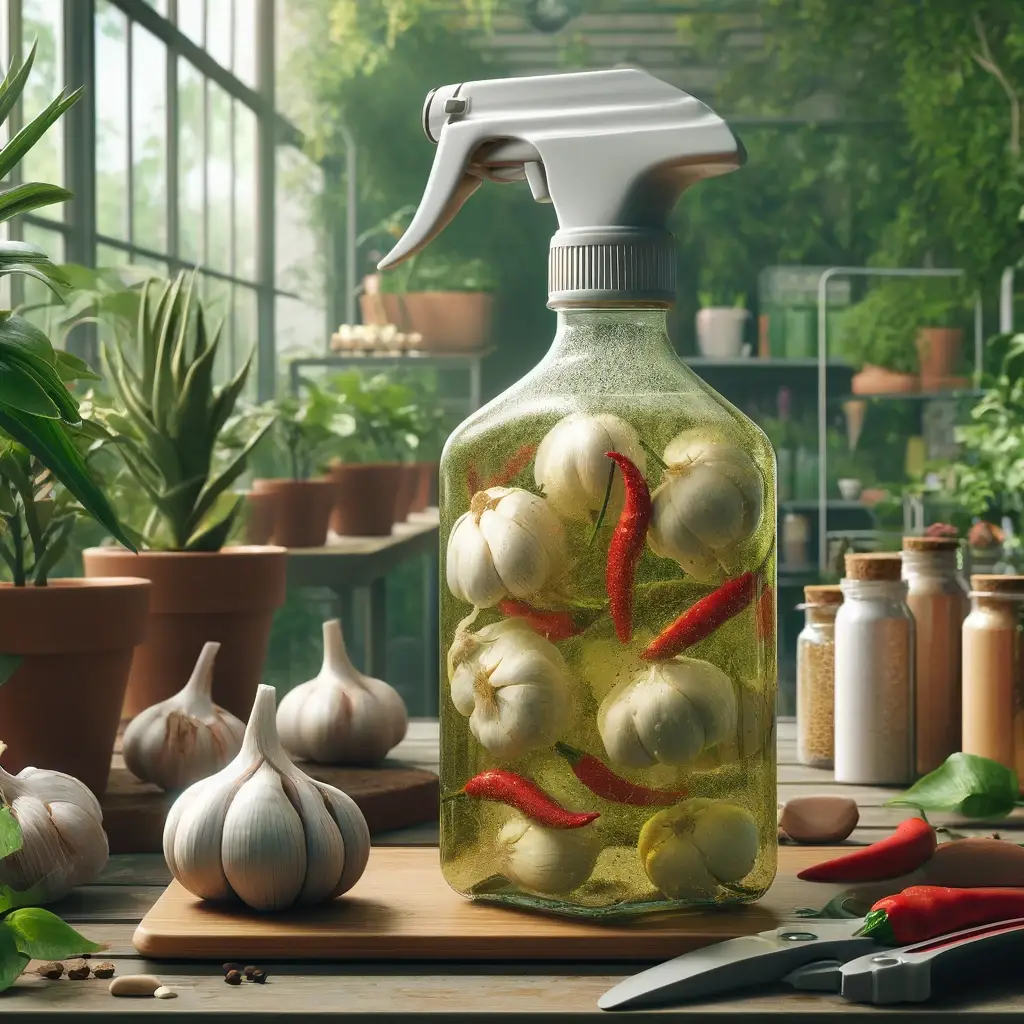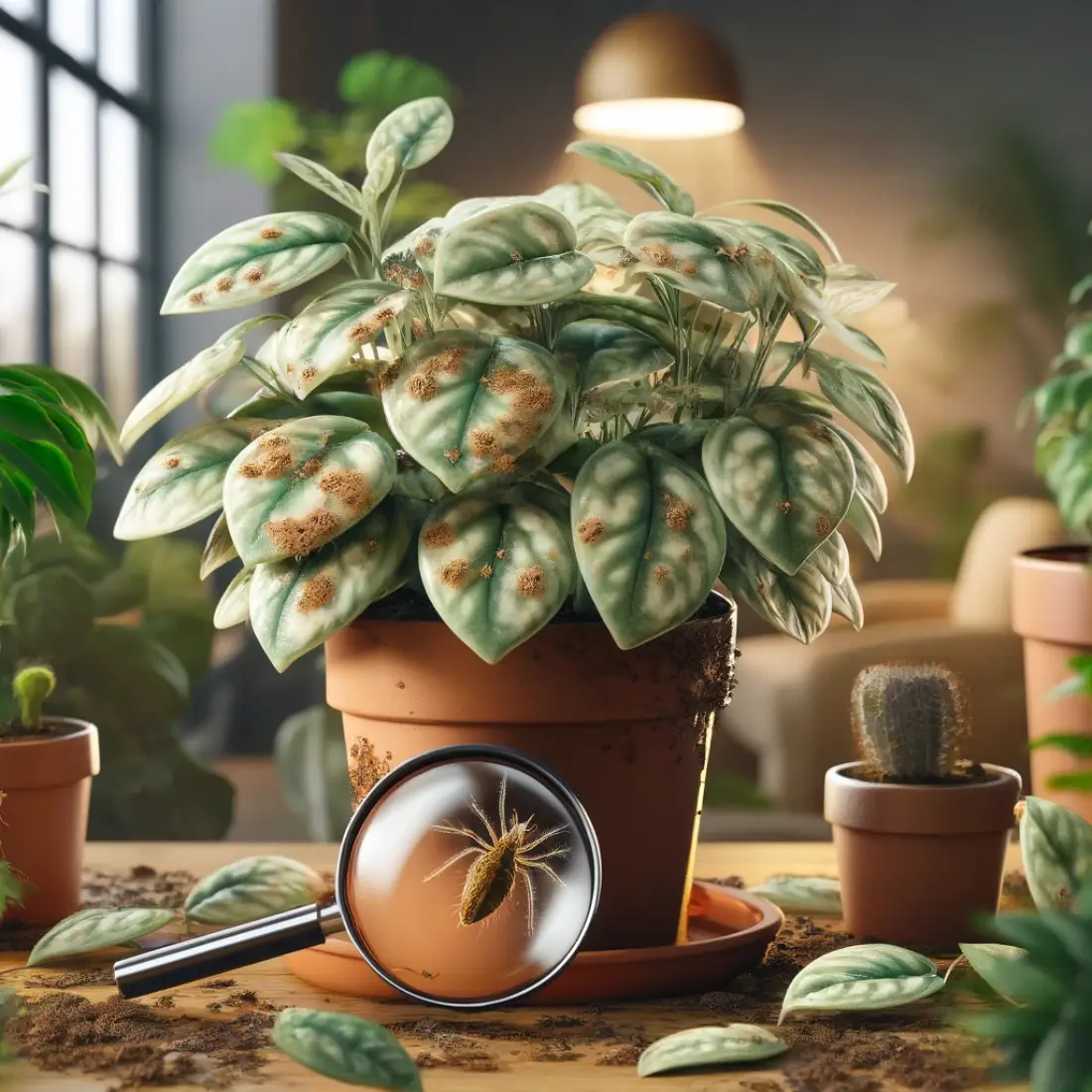Whiteflies are a pervasive and troublesome pest for many gardeners and farmers. These small, sap-sucking insects can cause significant damage to a variety of plants, leading to stunted growth, leaf damage, and even the transmission of plant diseases. Understanding whiteflies and their impact is crucial for effective management.
Whiteflies are tiny insects that belong to the Aleyrodidae family. These pests are closely related to aphids and mealybugs. Adult whiteflies are typically about 1-2 millimeters long and have a powdery white appearance due to a waxy secretion on their bodies.
They are often found on the undersides of leaves, where they congregate in large numbers.
Common Species of Whiteflies
- Greenhouse Whitefly (Trialeurodes vaporariorum): A prevalent species found in greenhouses and indoor plants.
- Silverleaf Whitefly (Bemisia tabaci): Known for attacking a wide range of crops, including vegetables and ornamentals.
Whiteflies undergo a complete metamorphosis with four stages: egg, nymph, pupa, and adult. The lifecycle can be as short as 20 days in warm conditions, allowing for rapid population growth.

How Whiteflies Damage Plants?
Whiteflies cause damage primarily through their feeding habits. They use their needle-like mouthparts to pierce plant tissues and suck out the sap. This feeding process depletes the plant’s vital nutrients, leading to several detrimental effects.
Physical Damage Caused by Whiteflies
- Yellowing of Leaves: As whiteflies extract sap, the affected leaves turn yellow and may drop prematurely.
- Stunted Growth: Plants infested with whiteflies often exhibit slowed growth and reduced vigor.
- Sooty Mold Development: Whiteflies excrete a sticky substance called honeydew, which promotes the growth of sooty mold on the plant’s surface, blocking sunlight and interfering with photosynthesis.
Spread of Plant Diseases
Whiteflies are vectors for various plant viruses. As they move from plant to plant, they can transmit diseases such as:
- Tomato Yellow Leaf Curl Virus (TYLCV)
- Cucumber Mosaic Virus (CMV)
Symptoms of Whitefly Infestation on Plants
- Sticky Leaves: Presence of honeydew on leaves.
- Visible Whiteflies: Clusters of whiteflies on the undersides of leaves.
- Wilting and Dropping Leaves: Due to nutrient depletion.
Identifying Whitefly Infestations
Early identification of whitefly infestations is critical to prevent extensive damage. Regular monitoring of plants helps in early detection.
- Flying Insects: Shaking an infested plant will cause a cloud of whiteflies to take flight.
- Honeydew and Sooty Mold: Sticky leaves and black mold are clear indicators.
Whiteflies are small but visible to the naked eye. Using a magnifying glass can help in spotting eggs and nymphs on the underside of leaves.
Organic Pesticides and Treatments
Organic pesticides and treatments provide additional tools for managing whiteflies. These products are derived from natural sources and are safe for the environment.
- Neem Oil Applications: Neem oil is a natural insecticide that disrupts the life cycle of whiteflies, preventing them from feeding and reproducing. It should be applied regularly for best results.
- Insecticidal Soaps: Insecticidal soaps work by breaking down the protective outer layer of whiteflies, causing them to dehydrate and die. These soaps are safe for plants and beneficial insects.
- Horticultural Oils: Horticultural oils, such as paraffinic or mineral oils, can smother whitefly eggs and nymphs, effectively controlling their populations. They are best applied during cooler parts of the day to avoid plant damage.
- Garlic and Chili Spray: A mixture of garlic, chili, and water can repel whiteflies.
- Soap and Water Solution: A simple solution of mild soap and water can be sprayed on plants to control whiteflies.
The frequency of applying organic pesticides depends on the severity of the whitefly infestation and the specific product used. Generally, organic pesticides like neem oil, insecticidal soaps, and horticultural oils need to be applied consistently to be effective.
For moderate to severe infestations, apply the organic pesticide every 7-10 days. This schedule helps disrupt the life cycle of whiteflies, which typically spans around 20 days. Regular applications ensure that you target newly hatched nymphs and prevent them from reaching adulthood and reproducing.
Application Tips
- Early Morning or Late Afternoon: Apply the pesticide during these times to avoid harming beneficial insects and to minimize the risk of plant damage from the sun.
- Thorough Coverage: Ensure you cover the undersides of leaves where whiteflies typically congregate and lay eggs.
- Repeat Applications: Continue the treatment cycle until you observe a significant reduction in whitefly numbers.
Monitoring
Regularly inspect your plants between treatments to assess the effectiveness of the pesticide. If whitefly populations persist, you may need to adjust the application frequency or integrate additional control methods like biological or physical controls.
Physical Control Methods
Physical controls involve manual or mechanical methods to reduce whitefly populations. These methods are straightforward and effective when used consistently.
- Yellow Sticky Traps: Yellow sticky traps attract and capture whiteflies due to their bright color. Placing these traps around the garden helps monitor and reduce whitefly numbers.
- Vacuuming Whiteflies Off Plants: Using a handheld vacuum to remove whiteflies from plants can be an effective way to reduce their numbers, especially during the early stages of infestation.
- Water Sprays and Their Effectiveness: Spraying plants with a strong jet of water can dislodge whiteflies and wash them off the leaves. This method is most effective when done regularly.
- Barriers and Row Covers: Using barriers and row covers can physically block whiteflies from reaching the plants. Lightweight, breathable covers are ideal for protecting young plants and crops.
Cultural Control Methods
Implementing effective cultural practices can significantly reduce the risk of whitefly infestations. These methods focus on creating an environment that is less conducive to whitefly populations.
Crop Rotation and Diversity
- Rotating Crops: Planting different crops in successive seasons disrupts the whitefly life cycle by removing their preferred hosts.
- Diverse Planting: Growing a variety of plants together can reduce the spread of whiteflies by making it harder for them to locate specific host plants.
Pruning and Sanitation Practices
- Regular Pruning: Removing infested leaves and plants helps control whitefly populations and prevents the spread of infestations.
- Sanitation: Keeping the garden clean and free of debris reduces hiding spots for whiteflies, minimizing their breeding grounds.
Reflective mulches deter whiteflies by creating a visually confusing environment, making it harder for them to locate host plants. Silver or aluminum-colored mulches are particularly effective.
Certain plants, such as marigolds, basil, and nasturtiums, can repel whiteflies or attract their natural predators. Companion planting helps create a balanced ecosystem that supports pest control.
Biological Control Methods
Biological control involves using natural predators and parasitoids to manage whitefly populations. These methods are effective and environmentally friendly.
- Ladybugs (Ladybird Beetles): Ladybugs feed on whitefly eggs and nymphs, helping reduce their numbers.
- Lacewings: Lacewing larvae are voracious predators of whitefly larvae.
- Encarsia Formosa: These tiny wasps lay their eggs inside whitefly nymphs, eventually killing them. They are especially effective in greenhouse environments.
Planting nectar-rich flowers, such as daisies and yarrow, attracts beneficial insects that prey on whiteflies.A diverse garden with a variety of plants supports a healthy population of natural predators.
Common Plants Affected by Whiteflies
Whiteflies are not selective and can infest a wide range of plants. Understanding which plants are most at risk can help in preventive measures.
- Vegetables: Tomatoes, cucumbers, peppers, and beans.
- Ornamental Plants: Hibiscus, fuchsia, and poinsettias.
- Fruit Trees: Citrus, figs, and pomegranates.
Certain crops and ornamental plants are particularly susceptible to whitefly infestations due to their attractiveness or environmental conditions conducive to whitefly proliferation.
Whiteflies thrive in warm, humid conditions. Infestations are often more severe during the spring and summer months.
FAQs about Whiteflies
How do whiteflies spread to new plants?
Whiteflies can fly short distances and are often spread by wind, human activity, or infested plants. They can also hitchhike on clothing or tools, making it easy for them to infest new areas.
Are whiteflies harmful to humans or pets?
Whiteflies are not harmful to humans or pets. However, they can cause significant damage to plants, leading to reduced yields and weakened plant health.
Can whiteflies survive indoors?
Yes, whiteflies can infest indoor plants, especially in greenhouses and homes with potted plants. Maintaining good sanitation and monitoring indoor plants regularly can help prevent infestations.
How often should I apply organic treatments?
The frequency of organic treatments depends on the severity of the infestation and the specific product used. Generally, treatments should be reapplied every 7-10 days or as needed to keep whitefly populations under control.
What are some signs of a whitefly infestation?
Signs of a whitefly infestation include yellowing leaves, stunted growth, sticky honeydew on leaves, and the presence of sooty mold. You may also see clusters of tiny white insects on the undersides of leaves.
What plants are most vulnerable to whitefly infestations?
Whiteflies commonly infest vegetables such as tomatoes, cucumbers, peppers, and beans, as well as ornamental plants like hibiscus, fuchsia, and poinsettias. Fruit trees like citrus, figs, and pomegranates are also susceptible.
Can I use homemade sprays to control whiteflies?
Yes, homemade sprays such as a mixture of garlic, chili, and water or a mild soap and water solution can help control whiteflies. These solutions are safe and can be effective when applied regularly.
How do beneficial insects help control whiteflies?
Beneficial insects like ladybugs, lacewings, and parasitoid wasps prey on whiteflies, reducing their populations naturally. Encouraging these predators in your garden supports biological control and minimizes the need for chemical treatments.
Is it necessary to use multiple methods to control whiteflies?
Yes, integrating various control methods, including cultural, biological, and physical controls, ensures a more effective and sustainable approach to managing whitefly infestations. This integrated pest management (IPM) strategy helps keep whitefly populations in check.
How can I prevent whitefly infestations in my garden?
Preventing whitefly infestations involves regular monitoring, maintaining good garden hygiene, using reflective mulches, introducing companion plants, and encouraging natural predators. Crop rotation and diverse planting can also disrupt the whitefly lifecycle and reduce infestations.














